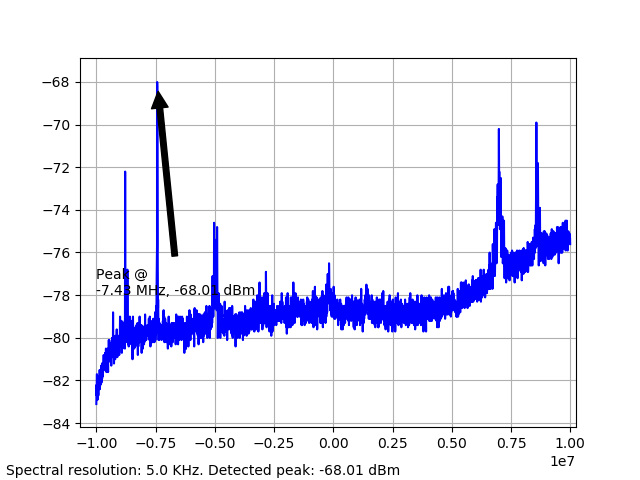It has been so long since I studied this at University, so I'll better ask here if I'm doing something really wrong here.
I'm using a USRP frontend for L1 band surveillance. I want a 20MHz bandwidth, but I found through testing that it's better to use a sampling frequency slightly higher than twice that bandwidth (I'm using 41MHz), so I can use a local oscillator to move the DC out of the spectrum. Probably there is some additional error of concept here, but this isn't the problem I'm facing now.
First thing to note: I'm using an FFT over a big chunk of data. Depending on the configuration this size may vary, but for example I'm currently using 8192 samples per FFT. Maybe this is too much and I should compose the whole FFT using many smaller ones, somehow?
In order to reduce noise, I'm performing 100 of these FFTs, summing their outputs and dividing by 100. Probably there's a better method, but so far ok.
After I apply the FFT (with FFTW library), I convert the output to dBW/Hz with the following formula (I'm assuming I have Vpeak):
10 * log10(psd_output / (2 * 50 Ohm)) - 60
Now, if I plot this vector, I get something like this:

The noise floor is getting some curvation (up to 5 dBs). I tried applying a hamming or a blackman-harris window to the FFT output with the hope or removing this effect, but it didn't work.
If I test with a jammer, I can see the peak, but I also see some other minor peaks which are unwanted (and that are not seen in an spectrum analyzer with the same configuration):

What am I missing? These should be simple operations, but I'm out of ideas at this point.

